Black Friday 2025 smart shopping strategies are essential for navigating the most AI-driven, psychologically manipulative, and competitive shopping season in history. With Black Friday falling on November 28, 2025, this year marks a watershed moment where artificial intelligence shopping assistants, sophisticated retailer psychology tactics, and sustainability concerns converge to create an unprecedented buying landscape that demands smarter consumer strategies.
This comprehensive playbook reveals how to outsmart retailers at their own game, leverage cutting-edge AI tools to uncover genuine deals, recognize and resist psychological manipulation tactics, and shop sustainably without sacrificing value or breaking your budget.
Why Black Friday 2025 is Different From Every Previous Year
Black Friday 2025 represents the first true AI-powered shopping event in history. Traffic from AI shopping assistants to retail websites surged by 1,800% year-over-year, while large language model-driven shopping increased by a staggering 4,700% over the last twelve months. This technological revolution fundamentally changes how consumers discover products, compare prices, and make purchasing decisions.
The numbers tell a compelling story. In 2024, U.S. shoppers spent $10.8 billion online on Black Friday alone, with global sales reaching $74.4 billion during the extended shopping period. Projections for 2025 suggest U.S. online Black Friday sales will reach $12 to $12.5 billion, while global sales are expected to climb to $80 to $82 billion.
What makes these projections particularly significant is the shift in how consumers are spending. Mobile commerce now dominates with 70% of purchases made via smartphones, and buy-now-pay-later services accounted for $686 million in 2024 sales, enabling consumers to spread payments for high-ticket items. Nearly one in three shoppers plans to use AI tools like ChatGPT, Perplexity, or Amazon’s Rufus assistant for product research, price comparisons, and gift recommendations this Black Friday.
The psychological warfare has also intensified. Retailers have expanded what used to be a single-day event into a month-long campaign, with major retailers like Best Buy launching early deals on October 31 and Walmart beginning Black Friday events on November 14. This extended timeline creates multiple urgency windows designed to trigger fear of missing out repeatedly throughout November.
The Seven Psychological Manipulation Tactics Retailers Use and How to Counter Them
Understanding retailer psychology transforms you from a reactive shopper into a strategic buyer. The following manipulation tactics are scientifically designed to override your rational decision-making and trigger emotional purchases.
Tactic 1: Artificial Scarcity and Limited-Time Pressure
Retailers create perceived scarcity through countdown timers, “only 3 left in stock” warnings, and limited-time offers. This triggers loss aversion, where the pain of missing a deal outweighs the pleasure of acquiring an item. Your brain’s reward system releases dopamine when you see words like “sale,” “deal,” or “exclusive,” making rational evaluation nearly impossible.
Counter Strategy: Before Black Friday, create a prioritized wishlist of items you genuinely need with target prices based on historical data. Use price tracking tools like Keepa for Amazon products or CamelCamelCamel to see if the “deal” represents actual savings or manufactured urgency. Set price alerts weeks in advance so you know the real value, not the inflated “original price” retailers display.
Tactic 2: Shopping Momentum Effect
Retailers strategically place loss-leader products at deep discounts to get you in the door or on their website. Once you make that first purchase, psychological research shows you’re 3 to 5 times more likely to make additional, unrelated purchases. This “shopping momentum” phenomenon explains why you enter a store for a discounted TV and leave with earbuds, cables, and accessories you didn’t plan to buy.
Counter Strategy: Implement a mandatory 24-hour cooling-off period for any unplanned purchase over $50. Add items to your cart but don’t checkout immediately. This simple delay allows your prefrontal cortex to regain control from the emotionally-driven limbic system. Studies show that 60% of impulse purchases are abandoned when consumers wait just one day.
Tactic 3: Price Anchoring and Fake Original Prices
Retailers display inflated “original prices” next to sale prices to create the perception of massive savings. Research reveals that many Black Friday “discounts” match or exceed prices available at other times during the year, yet the psychological impact of seeing “$999 $599” overrides rational price evaluation.
Counter Strategy: Use browser extensions like Honey or Rakuten that display price history directly on product pages. More importantly, leverage AI shopping assistants by asking ChatGPT or Perplexity: “What’s the historical price range for [specific product model] over the last six months?” These AI tools can aggregate pricing data from multiple sources faster than any manual research.
Tactic 4: Social Proof and Herd Mentality
Seeing “1,847 people are viewing this item” or “Best seller in electronics” triggers herd mentality. Nearly 60% of shoppers make purchases driven by fear of missing out amplified by social proof indicators. Retailers know that humans are social animals who equate popular choices with correct choices, even when personal needs differ significantly.
Counter Strategy: Ignore popularity metrics entirely. Instead, use AI tools to analyze genuine customer reviews for patterns. Ask ChatGPT: “Analyze the negative reviews for and identify the three most common complaints.” This gives you actionable intelligence about real product weaknesses that social proof indicators intentionally obscure.
Tactic 5: Decoy Pricing and Bundle Manipulation
Retailers introduce higher-priced options to make mid-tier products seem like better deals, a tactic called decoy pricing. Similarly, bundles often include items you don’t want or need, disguised as additional value. The math looks good until you realize you’re paying for products destined for a drawer.
Counter Strategy: Calculate the per-item value of bundles by searching each component separately. Frequently, buying items individually during Black Friday yields better total savings than pre-configured bundles. Use AI to run these calculations: “If Product A costs $X individually and Product B costs $Y individually, is the bundle at $Z a genuine savings?”
Tactic 6: Email and SMS Urgency Bombardment
Starting in early November, retailers flood inboxes with “early access,” “VIP exclusive,” and “flash sale” messages designed to create multiple urgency peaks. This constant psychological pressure wears down resistance and triggers reactive rather than strategic buying.
Counter Strategy: Create a dedicated Black Friday email folder and check it once daily at a scheduled time. This batching approach prevents real-time emotional reactions to urgency messaging. Better yet, use AI tools to summarize all deals: “Review these 20 promotional emails and tell me which offers represent genuine discounts of 40% or more on products I’ve previously researched.”
Tactic 7: Sunk Cost Fallacy Through Carts and Wishlists
Retailers know that once you’ve invested time building a cart or wishlist, you’re psychologically committed through the sunk cost fallacy. The mere act of clicking “Add to Cart” triggers the endowment effect, where you begin to feel ownership before purchase, making it harder to abandon items.
Counter Strategy: Build your cart or wishlist two weeks before Black Friday, then delete everything and rebuild it from scratch on November 27. This forces genuine reevaluation of each item’s necessity without the psychological attachment that develops over time. The items that make it back on the list represent true priorities.
The AI-Powered Smart Shopping Toolkit for Black Friday 2025

Artificial intelligence fundamentally changes the Black Friday equation. While retailers use AI to optimize pricing and targeting, savvy shoppers can leverage the same technology to find authentic deals and avoid manipulation. Here’s your comprehensive AI shopping toolkit.
Amazon Rufus: Your In-Platform Shopping Assistant
Amazon’s Rufus AI assistant launched in 2024 and represents a significant advancement in product discovery. Rather than searching through endless listings, you can ask natural language questions like “Show me durable wireless headphones under $100 with strong bass for running” or “What’s the difference between these three robot vacuum models?”
Strategic Use: Before Black Friday, use Rufus to create comparison charts for big-ticket items. Ask: “Compare the top 5 OLED TVs under $1500 including pros, cons, and best use cases.” Rufus aggregates thousands of reviews and specifications into actionable intelligence, saving hours of manual research. During Black Friday, use it to verify if lightning deals represent genuine value by asking “What’s the typical price range for this product?”
ChatGPT and Perplexity: Your Research Analysts
ChatGPT, Claude, and Perplexity serve as tireless research assistants capable of analyzing complex purchasing decisions. With 52% of consumers planning to use generative AI for holiday shopping this year, these tools have become essential for serious deal hunters.
Strategic Use: Create detailed prompts that leverage AI’s analytical capabilities. For example: “I’m considering buying a laptop for video editing with a budget of $1200. Research the top 5 models available during Black Friday 2025, compare their specs for video editing performance, identify which retailers offer the best deals, and flag any common quality issues mentioned in reviews.” This type of comprehensive analysis would take hours manually but delivers results in minutes through AI.
For price verification, prompt: “I found a Samsung Galaxy S25 for $899 marked down from $1299. Research whether this represents a genuine discount or an inflated original price. Include historical pricing data if available.” This cuts through retailer price anchoring instantly.
Keepa and CamelCamelCamel: Historical Price Intelligence
These price tracking tools provide detailed historical pricing data for Amazon products, exposing fake discounts and revealing true value. Keepa offers a Chrome extension that embeds price history charts directly on Amazon product pages, while CamelCamelCamel provides price drop alerts and tracking across multiple product categories.
Strategic Use: Install Keepa or CamelCamelCamel browser extensions in October and add target products to your watchlist. Set price drop alerts for your maximum acceptable price, not the current sale price. This automated monitoring eliminates the need to constantly check prices manually. The historical charts reveal pricing patterns, showing if Black Friday actually offers the year’s best price or if better deals existed in September or will arrive during Cyber Monday.
Visualping: Multi-Retailer Deal Monitoring
Visualping monitors any webpage for changes and sends instant notifications, making it perfect for tracking Black Friday deals across multiple retailers simultaneously. Unlike single-platform tools, Visualping works across Amazon, Walmart, Best Buy, Target, and any other retailer website.
Strategic Use: Set up monitors for specific product pages at multiple retailers weeks before Black Friday. Configure alerts for price changes, stock availability, or when new promotional text appears. For high-demand items likely to sell out, set Visualping to check every 5 to 15 minutes during Black Friday week. Use AI prompts within Visualping like “Alert me when price contains $799 or less” or “Tell me when text changes to In Stock” to filter notifications to only meaningful updates.
Honey and Rakuten: Automatic Coupon Application
Browser extensions like Honey automatically test and apply coupon codes at checkout, while Rakuten provides cash-back rewards on purchases from thousands of retailers. These passive tools require no effort beyond installation yet consistently deliver 5 to 15% additional savings.
Strategic Use: Install both Honey and Rakuten before Black Friday shopping begins. Honey focuses on finding additional coupon codes retailers don’t prominently advertise, while Rakuten provides cash-back that stacks with sale prices. Together, they create a layered savings approach. During Black Friday, Rakuten often increases cash-back percentages from standard 2 to 3% up to 10 to 15% at major retailers, effectively deepening already-discounted prices.
AI Shopping Assistants from Major Retailers
Best Buy, Walmart, and Target have integrated AI assistants into their platforms to help with product discovery and comparison. While these are retailer-owned tools, they still provide value when used strategically.
Strategic Use: Ask retailer AI assistants comparative questions that reveal which products offer the most features for your budget. For example: “Show me all 65-inch TVs under $700 and rank them by picture quality, smart features, and reliability ratings.” The AI synthesizes data the retailer already possesses but makes it accessible in ways traditional search cannot match. Use these tools for research but verify prices with independent sources like Keepa or CamelCamelCamel before purchasing.
Category-Specific Black Friday 2025 Deal Intelligence
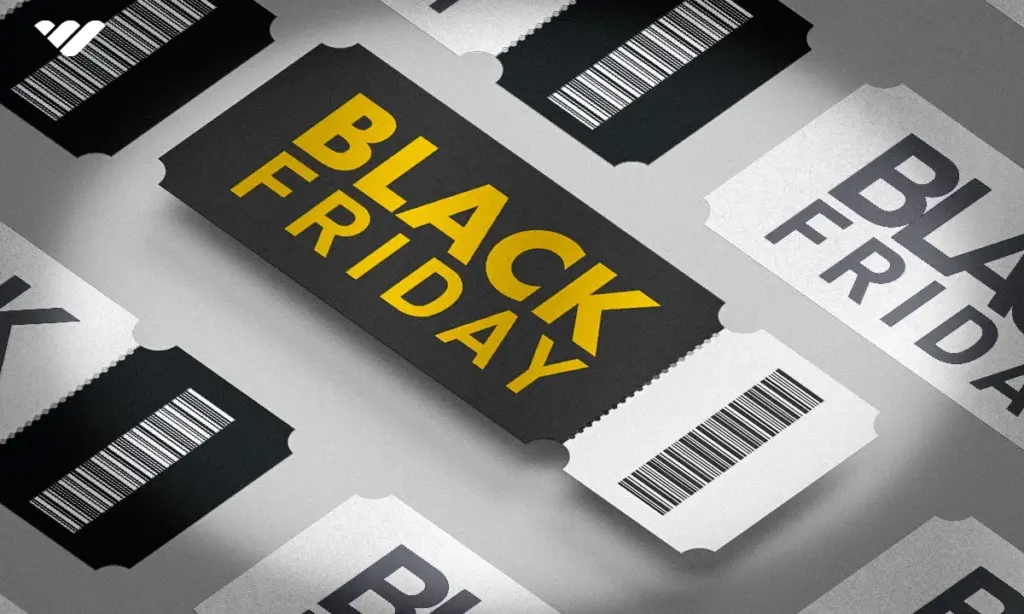
Not all categories offer genuine Black Friday value. Understanding which product types historically provide real savings versus manufactured hype enables strategic shopping decisions.
Electronics: The Flagship Black Friday Category
Electronics consistently deliver Black Friday’s deepest legitimate discounts, with average savings of 25 to 30% and premium items like TVs and laptops seeing cuts up to 40%. This year’s standout categories include OLED televisions, where models like the LG C5 65-inch and Samsung S90F are expected to see significant price reductions, laptop computers with particular focus on gaming and creator-focused models, wireless headphones and earbuds including Apple AirPods Pro 3, smart home devices with Amazon Echo, Google Nest, and Ring products at record lows, and gaming consoles particularly the Nintendo Switch and accessories.
Strategic Approach: For TVs, research the specific model number rather than brand and size alone. Retailers often create Black Friday-specific models with slightly reduced specifications that appear identical to premium versions. Ask AI tools: “What’s the difference between model LG OLED65C5PUA and LG OLED65C4PUA?” to understand if you’re getting current-generation technology or clearing out old stock.
For laptops, focus on processors and RAM rather than brand loyalty. A laptop with an Intel Core i7 or AMD Ryzen 7 processor and 16GB RAM at $800 offers better value than a brand-name laptop with inferior specs at $900. Use AI to run these comparisons across multiple models simultaneously.
Home Appliances: Substantial Savings on Essential Items
Large appliances including refrigerators, washing machines, and dishwashers typically see 20 to 35% discounts during Black Friday, making it one of the year’s best times for these purchases. Small appliances like air fryers, coffee makers, and robot vacuums often reach their lowest prices, with some models discounted 40 to 50%.
Strategic Approach: Appliance shopping during Black Friday works best for planned replacements rather than impulse upgrades. If your refrigerator is failing or washing machine is ten years old, Black Friday provides genuine savings on necessary purchases. However, don’t upgrade functioning appliances solely because deals exist.
For small appliances, focus on brands with strong reliability ratings. The cheapest air fryer on Black Friday might be $30, but if it fails within six months, you’ve wasted money. Ask AI: “Compare reliability ratings and longevity for [Brand A] versus [Brand B] air fryers based on customer review analysis.” This data-driven approach identifies which budget options offer genuine value.
Fashion and Clothing: Mixed Value Proposition
Fashion deals during Black Friday vary dramatically by retailer and product type. While discount percentages appear impressive, at 30 to 70% off, many retailers inflate original prices throughout October specifically to create perception of deeper Black Friday discounts. Fast fashion brands in particular use this tactic extensively.
Strategic Approach: Focus Black Friday fashion shopping on quality basics and investment pieces from reputable brands rather than trendy items. A quality winter coat at 40% off represents genuine value you’ll use for years. A trendy top at 60% off that you’ll wear twice offers poor value regardless of discount.
Use AI to research brand quality and longevity: “Compare the quality, durability, and customer satisfaction for winter coats from [Brand A] versus [Brand B] based on review analysis.” This intelligence helps distinguish between genuine deals on quality items versus impressive discounts on inferior products.
Beauty and Personal Care: Worthwhile but Verify Authenticity
Beauty products frequently appear in Black Friday promotions with deep discounts, particularly on gift sets and bundles. However, this category sees high rates of counterfeit products, especially through third-party marketplace sellers.
Strategic Approach: Purchase beauty products exclusively from authorized retailers or directly from brand websites, even if prices are slightly higher than unknown sellers. The savings from a suspicious third-party seller aren’t worth the risk of counterfeit or expired products.
For genuine deals, focus on gift sets that bundle full-size products rather than sample sizes. Calculate the per-ounce or per-unit value to ensure the bundle pricing actually delivers savings. AI can help: “This beauty set contains three full-size products: Product A is typically $X, Product B is typically $Y, Product C is typically $Z. The bundle costs $W. Calculate the actual savings percentage.”
Smart Home Technology: Emerging High-Value Category
Smart home devices have become Black Friday staples, with categories like smart speakers, video doorbells, security cameras, smart thermostats, and robotic vacuums regularly discounted 30 to 50%. Amazon’s Echo devices, Google Nest products, and Ring doorbells historically reach their lowest annual prices during Black Friday.
Strategic Approach: Smart home shopping requires ecosystem consideration. If you already use Amazon Alexa devices, additional Echo speakers integrate seamlessly. Mixing ecosystems—Alexa, Google Assistant, Apple HomeKit—creates compatibility headaches that undermine the smart home concept.
Use AI to plan smart home purchases: “I currently have [list of smart home devices]. What additional smart home products are compatible with my ecosystem and most likely to be discounted during Black Friday 2025?” This strategic approach builds a cohesive system rather than accumulating incompatible gadgets.
The Sustainability-Conscious Shopping Framework

Black Friday’s environmental impact is staggering. In 2022, European shoppers generated an estimated 400,000 tonnes of waste over Black Friday weekend alone, with 80% of purchases including products and packaging ending up in landfills. Sustainability-conscious shopping doesn’t mean avoiding deals entirely but rather applying strategic filters that align purchases with environmental values.
The Need vs. Want Pre-Purchase Filter
Before adding any item to your cart, answer three mandatory questions. First, would I buy this at full price? If the answer is no, the item represents impulse buying triggered by discount psychology rather than genuine need. Second, will I use this item at least 20 times over the next year? This threshold eliminates novelty purchases that create waste. Third, do I have a specific place and immediate use for this product? Items that sit in storage aren’t serving their purpose and represent wasted resources.
Implementation Strategy: Create a digital note on your phone with these three questions. Before clicking “Buy Now” on any Black Friday purchase, regardless of how attractive the deal appears, open the note and honestly answer each question. If you answer “no” to any question, remove the item from your cart. This simple discipline filter eliminates approximately 60% of impulse purchases according to consumer behavior research.
The Quality Over Quantity Calculation
Retailers want you to buy three cheap items instead of one quality item because it generates more transactions and repeat purchases when cheap items fail. The sustainability-conscious approach inverts this model by prioritizing durability and longevity.
Implementation Strategy: Before purchasing, research the expected lifespan of products in your target category. For example, a quality chef’s knife at $80 that lasts 20 years offers superior value and sustainability compared to a $25 knife that needs replacing every 2 years. Over 20 years, the cheap option costs $250 and generates 10 times the waste while delivering inferior performance.
Use AI for longevity analysis: “Compare the expected lifespan, durability, and warranty terms for [Product A] at $X versus [Product B] at $Y. Calculate the cost-per-year of ownership for each option over a 5-year and 10-year period.” This data-driven approach reveals true value beyond sticker prices.
The Second-Hand First Principle
For many product categories, gently-used items deliver 80% of the value at 40% of the cost while drastically reducing environmental impact. Black Friday pricing on new items sometimes matches or exceeds used pricing on premium products, creating strategic opportunities.
Implementation Strategy: Before purchasing any item over $100 during Black Friday, check eBay, Facebook Marketplace, Craigslist, and specialized resale platforms like Poshmark for fashion or Decluttr for electronics. Set a price threshold: if you can find a used version in excellent condition for less than 60% of the Black Friday sale price, the used option offers superior value.
For electronics, use AI to compare: “I found a used for $X in excellent condition with [warranty/return policy]. The new Black Friday price is $Y. Considering typical depreciation, reliability, and environmental impact, which represents better value?” This analysis incorporates factors beyond simple price comparison.
The Carbon Footprint Consideration
Shipping, packaging, and returns generate significant environmental costs that aren’t reflected in product prices. Strategically minimizing these impacts aligns sustainability values with smart shopping.
Implementation Strategy: Consolidate purchases with single retailers to reduce shipping trips and packaging. If you’re buying multiple items from Amazon, add them all to your cart and checkout once rather than making individual purchases. Select “consolidate shipping” options when available, even if it means slightly delayed delivery.
For clothing purchases, which have a 25 to 30% return rate during holiday shopping, use AI-powered virtual try-on tools and detailed sizing analysis to reduce returns. Ask AI: “Based on reviews of , how does the sizing run? Should someone who typically wears size M in [Brand A] size up or down for this item?” Reducing returns cuts your personal carbon footprint while saving return shipping costs.
The Local Business Alternative
While major retailers dominate Black Friday, local businesses increasingly offer competitive deals without the environmental costs of long-distance shipping and industrial-scale operations. Supporting local merchants strengthens community economies while reducing carbon impact.
Implementation Strategy: Dedicate 20 to 30% of your Black Friday budget specifically to local businesses. Use Google Maps to identify local retailers in categories you’re already shopping. Call ahead to ask about Black Friday promotions—many small businesses match or beat online prices for local customers to compete with shipping-free convenience of e-commerce.
For products where local options don’t exist, prioritize retailers with strong sustainability commitments. Use AI research: “Compare the sustainability practices, carbon-neutral shipping options, and environmental certifications of [Retailer A] versus [Retailer B].” This information enables values-aligned choices even when buying from national chains.
Black Friday 2025 Scams: Recognition and Protection Strategies
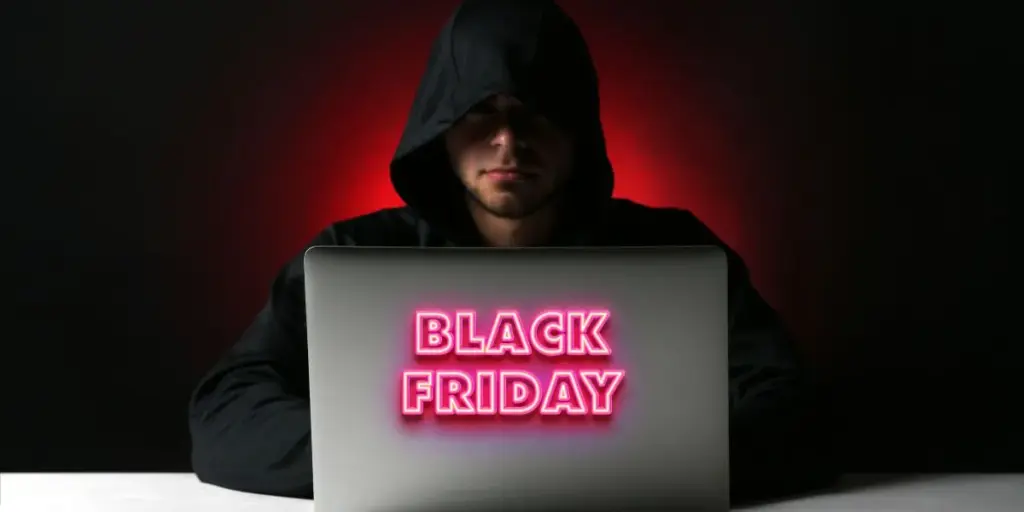
As Black Friday grows, so does fraud. Shoppers lost hundreds of millions to scams during 2024’s holiday shopping season, and 2025’s increased AI capabilities enable more sophisticated fraud. Understanding common scams and protection strategies is essential.
Fake Website and Spoofed Retailer Scams
Scammers create websites that closely mimic legitimate retailers, often using similar domain names like “amazan.com” instead of “amazon.com” or “walmark.com” instead of “walmart.com”. These sites display attractive Black Friday deals, collect your payment information, and deliver nothing.
Protection Strategy: Never type retailer URLs manually. Instead, bookmark official retailer websites before Black Friday and only access them through these bookmarks. Look for “https://” in the URL and a padlock icon in your browser’s address bar. If you receive an email about deals, don’t click links—instead, go to the retailer’s website directly through your bookmark.
Use AI verification: Take a screenshot of a suspicious website and ask ChatGPT: “Analyze this website for signs of fraud. Check domain name legitimacy, security certificates, and compare design elements to [Legitimate Retailer]’s official site.” While not perfect, AI can flag obvious red flags like mismatched branding or suspicious payment requests.
Fake Delivery and Order Confirmation Scams
These scams involve emails or text messages claiming “your items are being shipped” or “confirm your order” for purchases you never made. The messages contain links to phishing pages designed to steal login credentials and payment information.
Protection Strategy: If you receive an order confirmation for a purchase you didn’t make, do not click any links in the email or message. Instead, open your browser, navigate to the retailer’s website through your bookmark, and check your order history. Legitimate order issues will appear in your account dashboard.
Enable two-factor authentication on all shopping accounts before Black Friday. This adds an extra security layer even if scammers obtain your password. Most major retailers now support authenticator apps like Google Authenticator or Authy, which provide more security than SMS-based codes.
Too-Good-to-Be-True “VIP Access” and Exclusive Deals
Scammers send emails promoting exclusive VIP access or secret sales that seem legitimate but lead to malware installation or credential theft. These messages exploit urgency and exclusivity to override rational skepticism.
Protection Strategy: Remember that legitimate retailers send VIP access to known customers through verified channels. If you receive an unsolicited email about exclusive access you didn’t sign up for, it’s a scam. Real VIP programs require prior enrollment and send communications from verified email addresses.
Cross-reference suspicious offers using AI: “I received an email claiming to offer 70% off TVs at Best Buy for VIP members only. The email comes from [email protected]. Is this legitimate?” AI tools can quickly identify mismatched domains and suspicious patterns that indicate fraud.
Fake Chatbot and Customer Service Scams
Scammers create fake customer service chatbots on counterfeit websites or even inject them into legitimate sites through compromised ads. These chatbots request payment information or personal details under the guise of customer support.
Protection Strategy: Only use customer service chat features accessible through official retailer websites that you navigated to directly, never through email links or social media ads. Legitimate customer service chatbots never request full credit card numbers or passwords—they can already access your account information through your authenticated session.
If a chatbot requests sensitive information, close the chat and contact the retailer through their official phone number listed on their verified website. Take screenshots of suspicious chatbot conversations and report them to the legitimate retailer’s fraud department.
Social Media Marketplace Scams
Facebook Marketplace, Instagram shops, and TikTok commerce see increased Black Friday scams involving non-delivery, counterfeit goods, and payment theft. The casual, social nature of these platforms reduces buyer skepticism, enabling fraud.
Protection Strategy: For social media marketplace purchases, never pay through direct bank transfer, Venmo, or other peer-to-peer payment apps. These offer no buyer protection. Instead, use the platform’s built-in payment system or PayPal Goods and Services, which provide dispute resolution and refund protections.
Research seller legitimacy before purchasing. Check account age, review history, and response patterns. Ask AI: “Analyze this seller profile: account created [date], has [X] reviews, selling [category]. Based on these factors, what’s the fraud risk level and what additional verification should I require?” This systematic approach reduces impulse marketplace purchases that turn into scams.
The 48-Hour Pre-Black Friday Preparation Checklist
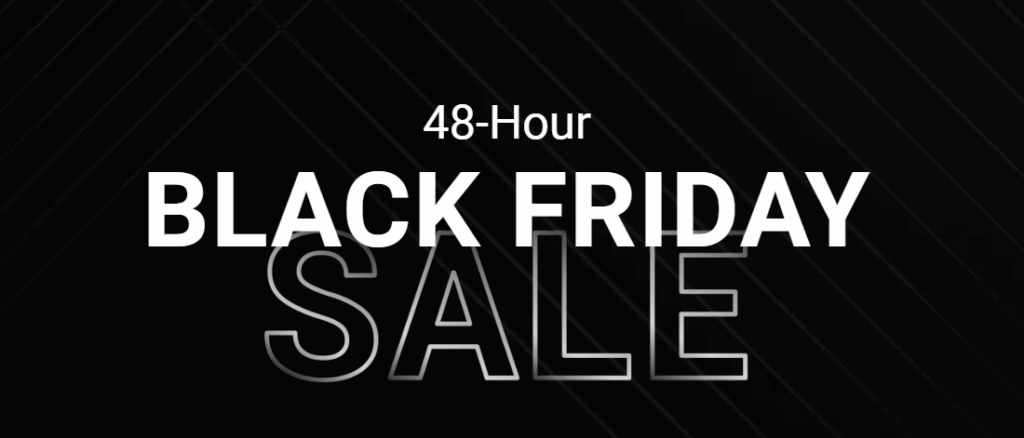
Strategic preparation in the 48 hours before Black Friday separates successful deal hunters from disappointed impulse buyers who overspend on items they don’t need.
48 Hours Before: Final Research and Setup
Complete all price tracking tool installations and verify they’re functioning correctly. Test Keepa, CamelCamelCamel, Honey, and Rakuten on a few sample products to ensure alerts are working. Set up Visualping monitors for high-priority items at multiple retailers with 15-minute check intervals.
Create a master spreadsheet with columns for item name, target price, current price, retailers to check, and priority ranking. This centralized document becomes your command center during the Black Friday chaos. Include links to specific product pages to eliminate searching during time-sensitive deals.
Ask AI to create a personalized shopping schedule: “I want to buy [list of items] during Black Friday 2025. Research when each major retailer launches their sales, and create an hour-by-hour schedule for November 28 that prioritizes my highest-value deals when they’re most likely to be available.” This strategic timeline prevents running out of time for important purchases while chasing trivial deals.
24 Hours Before: Financial and Security Preparation
Set up a dedicated temporary credit card with a limit equal to your maximum Black Friday budget. Many credit card companies allow you to create virtual card numbers with custom spending limits through their mobile apps. This prevents overspending and limits potential fraud exposure.
Enable purchase notifications on your primary credit card so you receive instant alerts for every transaction. This real-time monitoring allows immediate action if fraudulent charges appear. Review your bank balance and available credit to ensure you can actually afford your planned purchases without relying on buy-now-pay-later services that create future financial stress.
Update passwords on all retailer accounts where you plan to shop and enable two-factor authentication. This 30-minute security investment protects against account takeover scams that spike during Black Friday. Use a password manager like 1Password or Bitwarden to generate and store strong unique passwords for each account.
12 Hours Before: Final Prioritization and Mental Preparation
Review your shopping list one final time with the sustainability filter questions. Remove items that don’t pass the three mandatory questions: Would I buy this at full price? Will I use this at least 20 times in the next year? Do I have a specific place and immediate use for this?
Share your shopping plan with a trusted friend or family member who can provide accountability. Research shows that shopping with or reporting to a frugal partner reduces impulse purchases by 40% compared to solo shopping. Send them your list and ask them to check in with you around midday on Black Friday to ensure you’re sticking to your plan.
Prepare your shopping environment. Charge all devices, clear browser caches to prevent website glitches, have your payment information ready but not auto-saved in browsers, and set up a quiet, distraction-free space for online shopping. This environmental preparation reduces friction that causes missed deals or impulsive additions to your cart.
Black Friday Morning: Execution Mode
Start with your highest-priority items first. The biggest mistake shoppers make is browsing deals randomly and missing must-have items because they sold out while you were distracted by low-priority impulse deals. Follow your AI-generated shopping schedule and resist the temptation to deviate.
Use AI assistants in real-time for quick price verification. When you find a deal that seems too good to be true, immediately ask ChatGPT or Perplexity: “I found [Product] for $X marked down from $Y. Is this the best price available today across major retailers, and does this represent genuine savings based on historical pricing?” This real-time intelligence prevents buyer’s remorse from purchasing items that were cheaper last week.
Take mandatory 10-minute breaks every 90 minutes to step away from screens. These breaks allow your rational brain to regain control from the emotionally-driven purchase impulses that Black Friday psychology intentionally triggers. During breaks, review your budget and remaining priorities rather than browsing additional deals.
Post-Black Friday: Maximizing Value and Minimizing Regret
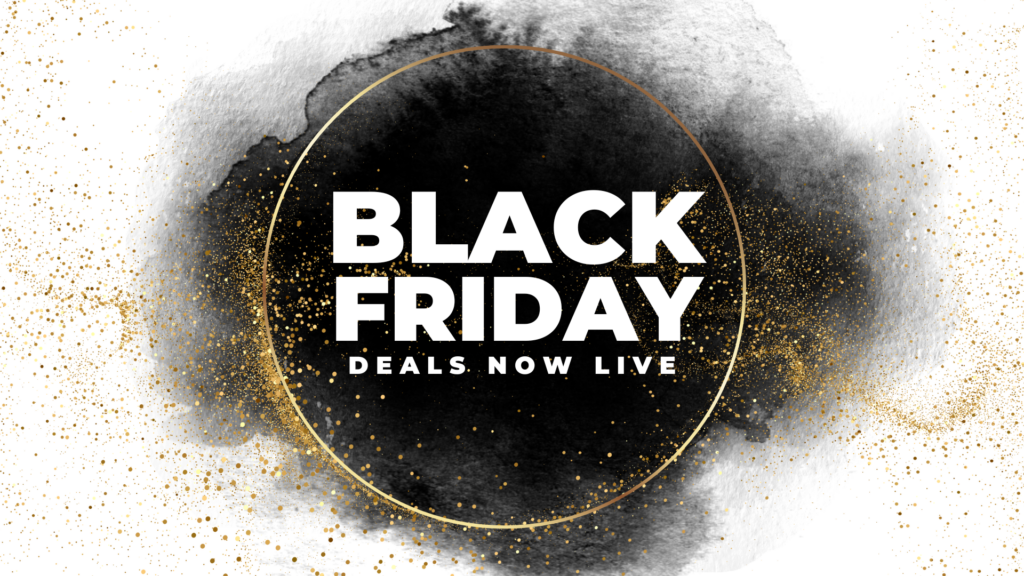
Black Friday success isn’t measured solely by deals captured but by overall satisfaction with purchases and budget adherence. Post-purchase strategies significantly impact long-term value.
Immediate Post-Purchase Actions
Save all confirmation emails and receipts in a dedicated “Black Friday 2025” folder. Take screenshots of product pages showing the sale price, specifications, and return policies. This documentation proves essential if items don’t match descriptions or quality issues emerge.
Add calendar reminders for return windows and warranty registration deadlines. Most retailers extend return periods for Black Friday purchases to mid-January, but you must track these dates yourself. Missing a return window by even one day converts a poor-quality purchase into a permanent financial loss.
Review your total spending against your pre-Black Friday budget. If you overspent, identify which purchases to return immediately before emotional attachment develops. Items still in unopened boxes are easiest to return, so don’t open anything immediately—wait 48 hours to ensure you still want each purchase after the excitement fades.
The 7-Day Evaluation Period
Consumer behavior research reveals that approximately 30% of Black Friday purchases trigger buyer’s remorse within the first week. Rather than living with regret or eating the cost of unused items, implement a structured evaluation period.
For each purchase, answer three questions seven days after Black Friday. First, have I used this item yet? If a purchase sits unused for seven days, it likely won’t get used at all. Second, does this item perform as expected based on the product description and reviews? Discrepancies between promises and reality justify returns. Third, if I could go back, would I make this purchase again knowing what I know now? Honest “no” answers identify returns that improve your financial situation.
Use AI to process this evaluation objectively: “I bought [Product] for $X during Black Friday. I’ve used it [Y] times in the past week. It performs [description]. Similar items that I previously bought in this category got used [Z] times in the first week. Based on this pattern, should I keep or return this item?” This data-driven analysis removes emotional justification that keeps poor purchases.
Warranty Registration and Protection Plans
Many consumers fail to register warranties on Black Friday purchases, costing hundreds when products fail just outside the manufacturer’s coverage period. Dedicate 30 minutes during the week after Black Friday to register all warranties and file protection plan documentation.
Create a digital folder with photos of receipts, serial numbers, and warranty certificates for each significant purchase. This organized documentation enables quick claims if problems emerge months or years later. For electronics and appliances, note the purchase date and warranty expiration date in a calendar app with alerts six months before expiration, giving time to evaluate extended warranty purchases when you have actual usage data.
The Long-Term Black Friday Success Strategy
True Black Friday mastery extends beyond a single shopping day to create a sustainable approach that delivers value year after year while protecting your finances and aligning with your values.
Building a Year-Round Deal Intelligence System
The smartest Black Friday shoppers begin preparation in January, not November. Throughout the year, maintain a running wishlist of items you need or want with notes about current prices. When Black Friday arrives, you have historical price context that most shoppers lack.
Use AI to create an automated monitoring system: “Set up a quarterly price check system for these items: [list]. Every three months, research current prices, identify trends, and predict optimal purchase timing. Flag items where Black Friday historically offers the best annual pricing.” This systematic approach transforms Black Friday from a chaotic event into a strategic component of your annual shopping plan.
Developing Psychological Resistance Over Time
Each Black Friday provides data about your own psychological vulnerabilities. After Black Friday 2025, conduct an honest post-mortem review identifying which psychological tactics successfully manipulated you into unplanned purchases. Write these insights down and review them before Black Friday 2026.
Common patterns emerge over multiple years. Perhaps you’re particularly vulnerable to social proof indicators, or maybe scarcity warnings trigger your impulse buying. Recognizing your specific weak points allows targeted countermeasures. If countdown timers trigger you, use browser extensions to hide them. If “only 3 left” warnings cause panic buying, practice ignoring them through exposure over lower-stakes shopping throughout the year.
Teaching Others and Reinforcing Your Own Knowledge
One of the most effective ways to strengthen your Black Friday discipline is teaching these strategies to friends and family. Explaining psychological manipulation tactics to others reinforces your own awareness and creates accountability partnerships for future shopping events.
Create a Black Friday strategy group with 3 to 5 friends where you share pre-approved shopping lists, report good deals, and provide accountability checks. Research shows that shoppers who report to a group spend 30 to 40% less on impulse purchases compared to solo shoppers. This social framework transforms Black Friday from an isolating consumer event into a collaborative strategic exercise.
Conclusion: Reclaiming Control in the Black Friday Marketplace
Black Friday 2025 smart shopping strategies empower you to participate in the year’s biggest shopping event on your terms rather than retailers’ terms. By understanding and countering psychological manipulation tactics, leveraging AI tools for research and price verification, applying sustainability filters to ensure purchases align with your values, and preparing strategically rather than reacting emotionally, you transform from a target of sophisticated marketing into a strategic buyer who captures genuine value.
The statistics are sobering: without strategic preparation, the average shopper overspends by 30 to 40% on Black Friday, with 25 to 30% of purchases returned due to buyer’s remorse, generating massive waste and financial stress. But armed with the psychology-proof framework in this playbook, you join the minority of strategic shoppers who actually save money, acquire items they need and use, and experience satisfaction rather than regret.
This Black Friday, remember that the best deal is the one you don’t make on something you don’t need. Every dollar not spent on impulse purchases is a dollar available for genuine priorities. Every manipulative tactic you recognize and resist strengthens your psychological defense for future shopping events. Every AI tool you master creates permanent competitive advantage over retailers who still assume consumers shop blindly.
Start your preparation today by installing price tracking tools, creating your prioritized wishlist with target prices based on historical data, and setting up AI assistants to monitor deals across multiple retailers. The shoppers who start preparing now will capture the best deals on November 28, while those who wait until Black Friday morning will overpay for whatever happens to still be available.
Black Friday doesn’t have to be a financial stress event that fills your home with unused purchases and your credit card with regret. With the right strategies, Black Friday 2025 becomes an opportunity to acquire genuine value on items you actually need, all while outsmarting some of the most sophisticated consumer psychology and marketing tactics in the retail industry.
Broos.link is a premium digital publication delivering fresh, engaging content that informs and inspires across technology, culture, education, and lifestyle topics. As part of the Broos Action ecosystem, we prioritize originality, clarity, and relevance, connecting Africa’s digital voices to global conversations. Whether you’re navigating Black Friday deals, exploring AI innovations, or discovering cultural insights, Broos.link provides well-researched, unbiased coverage that empowers informed decisions.

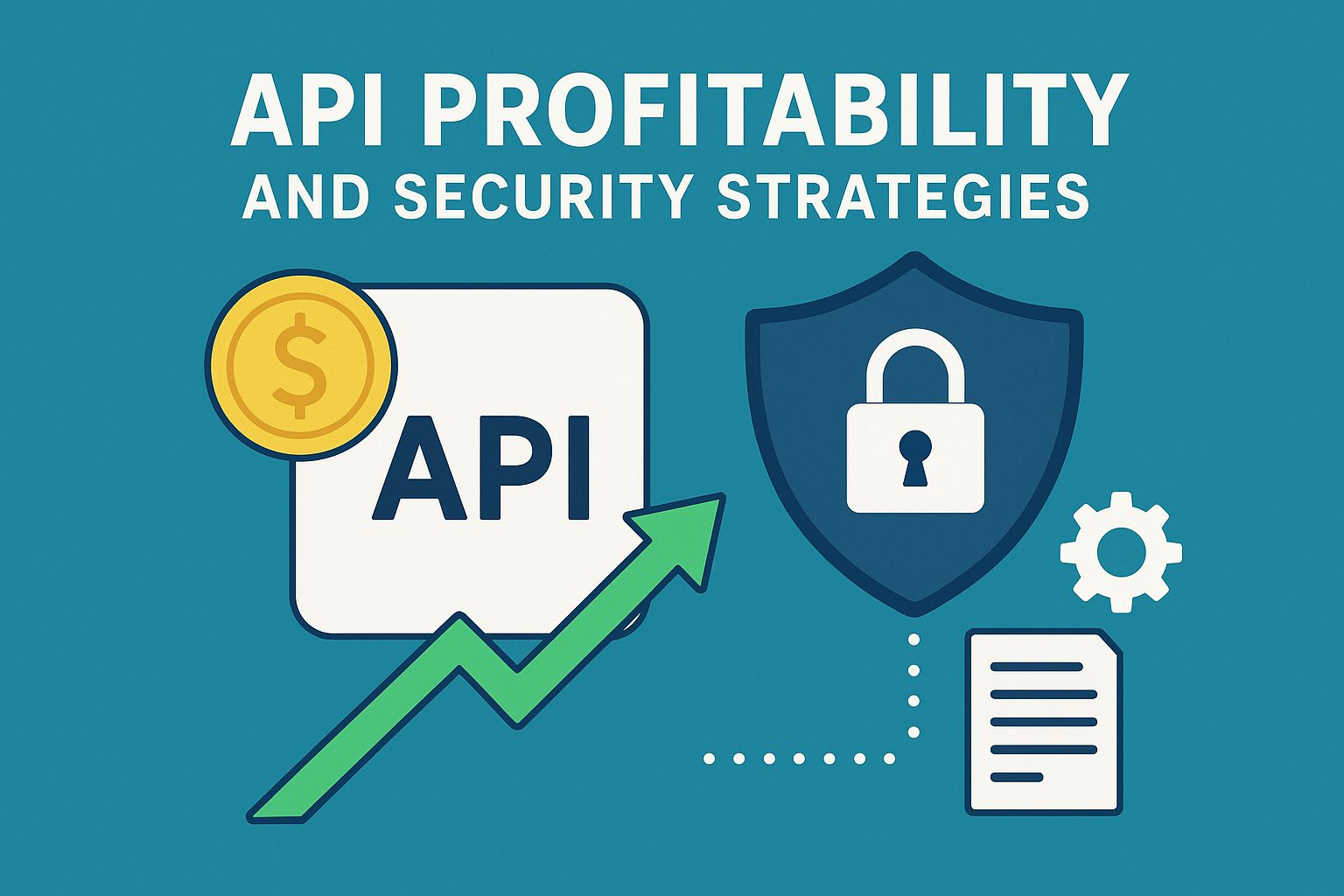
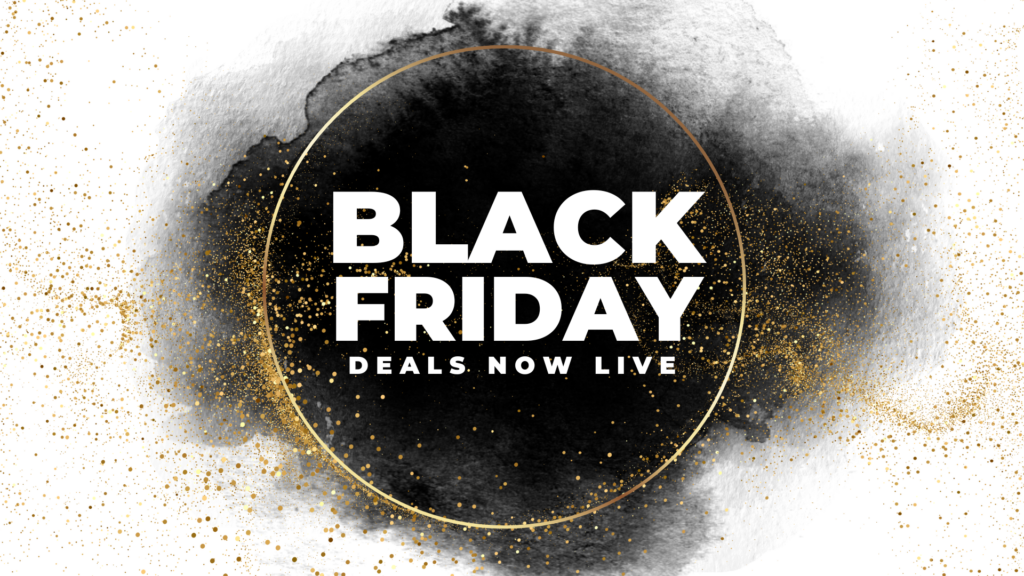






Leave a Reply